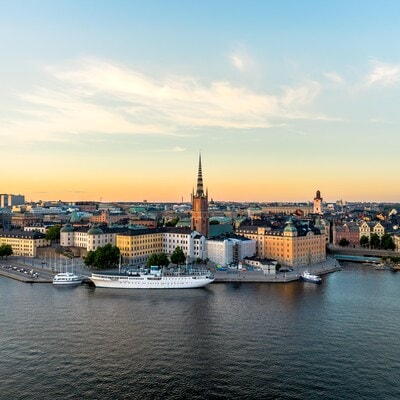Click here to connect with us on WhatsApp
Currently, the government provides 10,000 kronor per adult and 5,000 kronor per child, with a family cap of 40,000 kronor, for those who voluntarily return to their home countries.
Other countries offering return incentives
Sweden is not alone in offering return grants to migrants. Several European nations have implemented similar measures, although the amounts vary significantly.
Denmark provides more than $15,000 per person
Norway offers about $1,400 per person
France provides approximately $2,800
Germany offers around $2,000
New policies to target low-skilled labour
As part of its policy shift, Sweden is also looking to reduce the number of low-skilled workers entering the country. The government is preparing to introduce a law by June 2025 that will require immigrants to earn at least 80% of the median Swedish salary, currently standing at 35,600 kronor (approximately $3,455), to qualify for a work permit. Some professions, like domestic care workers, will be excluded from this rule.
A government press release stated, “Labour immigration is important for Sweden, but although the country primarily needs skilled and highly skilled workers, labour immigration to jobs requiring little education or experience and with low wages is extensive. In many cases, these jobs could be taken by people already living in Sweden.”
To shift the focus towards more skilled labour, the government proposes a wage threshold for immigrants seeking a work permit and plans to promote highly skilled labour immigration.
Attracting highly skilled workers
Despite the restrictions for low-skilled workers, the Swedish government wants to make the country more attractive for highly skilled immigrants. On September 25, 2024, a Bill was presented to Parliament, proposing measures to attract and retain highly qualified workers.
“Sweden must be an attractive country for highly qualified workers, and employers in highly qualified sectors must be sure that they can get the workers they need in time. This is an important part of the Government’s efforts to strengthen Sweden’s competitiveness,” Forssell said.
This proposal seeks to implement the EU’s new Blue Card Directive, which lowers the salary threshold for an EU Blue Card and makes more categories of workers eligible for it. The amendments are expected to take effect from January 1, 2025.
Net emigration: A rare occurrence
In August 2024, the Swedish government announced that the number of people leaving Sweden would surpass the number of arrivals for the first time in over 50 years. According to a post by the Swedish Ministry of Justice on X (formerly Twitter), the country is on track to receive the lowest number of asylum-seekers since 1997.
Migration Minister Maria Malmer Stenergard added that between January and May 2024, 5,700 more people left Sweden than arrived. “The number of asylum applications is at a historically low level,” she said, adding that Sweden has net emigration for the first time in half a century.
Stenergard also said, “This trend towards sustainable immigration is necessary if we are to strengthen integration and reduce social exclusion.”
Indians in Sweden see rise in departures
Sweden has also seen a notable increase in the number of Indian-born individuals leaving the country. Between January and June 2024, 2,837 Indians left Sweden—a 171% rise compared to 1,046 in the same period last year, according to Statistics Sweden. This makes Indians the largest group of emigrants, surpassing those from Iraq, China, and Syria.
Despite this, Indians remain one of the largest immigrant groups in Sweden. In 2024, they are second only to Ukrainians in terms of new arrivals, with 2,461 Indian-born individuals moving to Sweden between January and June. However, this is a drop from 3,681 in the same period last year, marking the lowest level of Indian immigration since 2017, excluding the pandemic years.
The Indian population in Sweden stood at 58,094 in 2023. The decline in immigration numbers follows years of steady growth, driven by strengthened diplomatic ties and Sweden’s efforts to attract skilled professionals to fill gaps in sectors like technology.
According to The Local Sweden, “Prior to this, Indian immigration had been on an uninterrupted climb since 2009, following strengthening diplomatic ties and the Nordic country’s drive to attract highly-skilled students, researchers, and labour migrants.”
Crackdown on migration continues
Sweden’s government has been firm in its approach to curbing migration. Immigration fell by 15% year-on-year in early 2024, while emigration rose by 60% during the same period. Asylum applications continue to decline, reaching their lowest levels since 1997.
The country has historically taken in large numbers of migrants, especially from war-torn regions such as the former Yugoslavia, the Middle East, and Africa. However, since the Moderate Party’s rise to power in October 2022, with backing from the far-right Sweden Democrats, immigration policies have become much stricter.
The Swedish Migration Agency has predicted a continued drop in asylum applications and rising emigration figures for the foreseeable future.
A change in Sweden’s migration history
Sweden has long been considered a welcoming nation for asylum-seekers, often described as a “humanitarian superpower.” However, recent years have seen increasing difficulties in integrating the newcomers, particularly those arriving from conflict zones. In 2014, Sweden registered over 81,000 asylum-seekers, a number that nearly doubled to 163,000 the following year.
Former Prime Minister Fredrik Reinfeldt encouraged citizens at the time to show tolerance, saying, “I know that this will cause friction. I therefore call on the Swedish people to show patience and open their hearts.” Yet, by 2015, Sweden admitted it needed a “respite,” and immigration policies started tightening.
Stefan Löfven, who was prime minister at the time, said in a 2015 news conference, “It pains me that Sweden is no longer capable of receiving asylum seekers at the high level we do today. We simply cannot do any more.” Since then, the country’s migration policies have taken a strict turn, especially under the current conservative government, which came to power in late 2022.
Source link : http://www.bing.com/news/apiclick.aspx?ref=FexRss&aid=&tid=670f74691c6f4861809804e8e7651794&url=https%3A%2F%2Fwww.business-standard.com%2Ffinance%2Fpersonal-finance%2Fcrackdown-on-immigrants-sweden-offers-rs-28-lakh-to-foreigners-to-leave-124101600430_1.html&c=5959337539916411762&mkt=de-de
Author :
Publish date : 2024-10-16 00:18:00
Copyright for syndicated content belongs to the linked Source.
